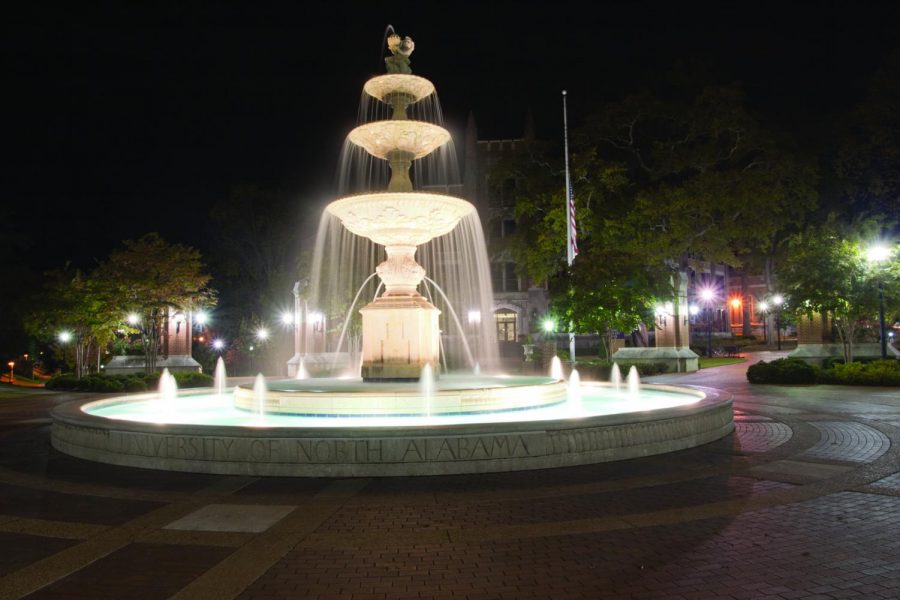Light pollution can be problematic
October 27, 2011
Light pollution is a serious problem on campus, according to UNA Assistant Professor of Astronomy and Director of the Planetarium and Observatory Dr. Mel Blake. He spoke at a recent SGA senate meeting on the effects and problems associated with the issue.
Blake said light is widely misused on campus and elsewhere.
“There is no reason to send half the light you’re paying for up into the sky,” he said.
And according to him, that’s exactly what some of the older light fixtures on campus do. He said that the spherical light fixtures, along with many other inefficient designs, on campus send more than half of their light upwards rather than toward walkways or dimly lit areas.
But the problem does not stop at extra energy cost for the university, Blake said.
“Light pollution can have an effect on human health,” he said.
Blake gave Rice and Rivers halls, dormitories with one side each facing the bright practice field lights, as examples of ways light pollution could affect student health.
“Too much light at night can affect melatonin release,” he said. “Melatonin is an antioxidant that clears out all the bad stuff from the day.”
Too little melatonin can lead to cancer, according to Blake.
The solution, as proposed by Blake, is full cutoff light fixtures, which are box-shaped fixtures with mirrors inside, directing light to its intended target so none goes into the sky or sleeping students’ dorm rooms. More efficient lighting means a lower wattage bulb, Blake said.
“Low light pollution is better for human health, cheaper for the university and, of course, it’s good for me, too,” he said.
Blake said campus light pollution affects the Planetarium and Observatory.
“When the field lights across the street are on, we can only see what we can observe with the naked eye,” he said. “So, during the practice season, we can’t do anything with (the Planetarium and Observatory). I lose a quarter of the year.”
Blake is campaigning to change the fixtures on campus, but hopes to later expand his cause.
“I was working on a grant a couple years ago for TVA to fund a light pollution campaign,” he said.
Blake said TVA might have an interest in reducing light pollution in the Shoals because of growing concern about having to build more power plants to support increased energy use in the area.
Blake said he wants SGA to start spreading the word about the issue to get the students involved.
SGA President Ralph Akalonu said he sees Blake’s point.
“A lot of what he said made sense,” Akalonu said. “(Reducing campus light pollution) could potentially save the campus a lot of money. This is something the university should look into.”
SGA will further examine the issue and determine what role, if any, it should play in the solution, according to Akalonu.


